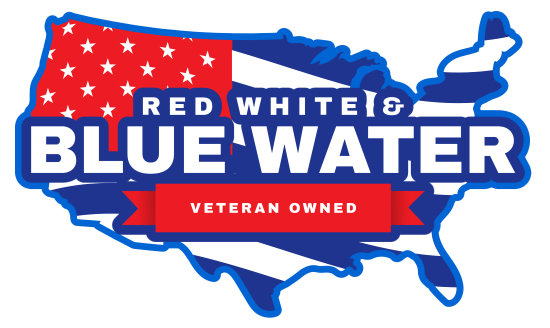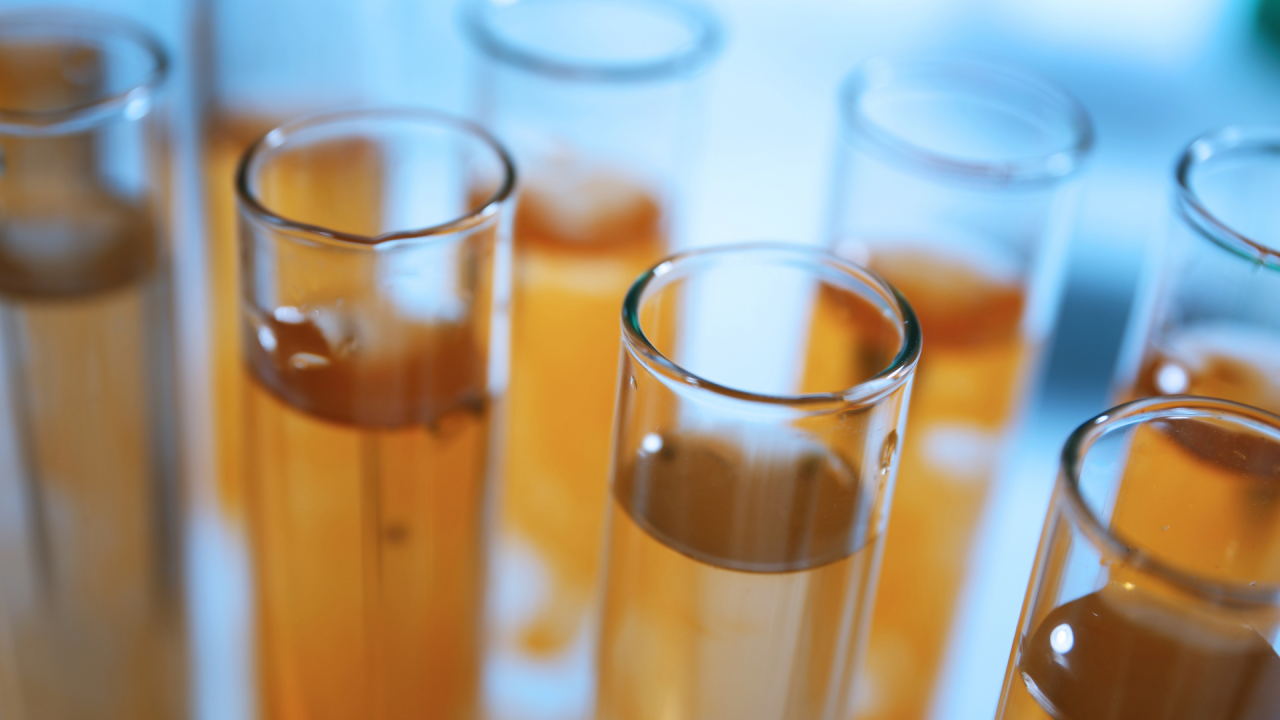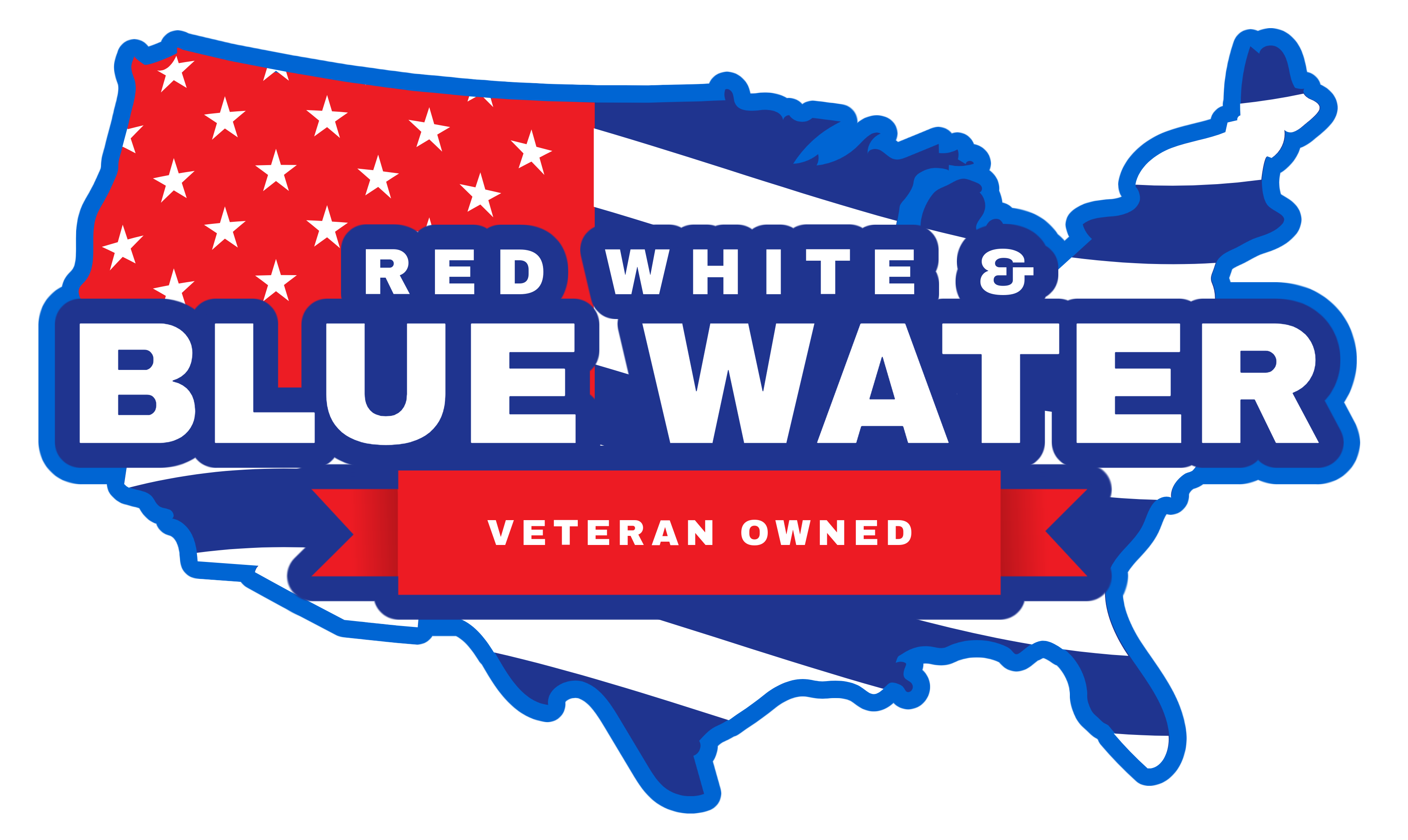Have you ever wondered what’s really in your tap water? It might look clean, but hidden contaminants are not great for your health or your home’s plumbing. Don’t wait until it’s too late – take charge of your water quality now! David Labell and the Red White & Blue Water Treatment team are ready to help you discover what’s in your water and make it crystal clear and safe for you and your family.
What is in your drinking water?
Let’s talk about what kinds of stuff could lurk in your water. You might be surprised at the variety of contaminants that can sneak into your tap water. From chemicals like chlorine to heavy metals like lead and even tiny organisms like bacteria, many things could be causing problems. Let’s break down some common contaminants in Stafford County and how they can affect your health and home.
1. Chlorine
What it is: Chlorine is a chemical used to kill bacteria in water. It’s like a water disinfectant.
How it affects health: While small amounts are usually safe, too much chlorine can lead to stomachaches and other issues. It can also make your water taste and smell funny.
How it affects plumbing: Chlorine can be harsh on your pipes and fixtures, causing them to wear out faster. It’s especially harsh on rubber seals in faucets and toilets.
2. Lead
What it is: Lead is a toxic metal that can leach into water from old pipes and fixtures.
How it affects health: Lead is terrible for you, especially kids. It can cause developmental, learning, and other serious health problems.
How it affects plumbing: Lead itself doesn’t harm plumbing, but its presence signals old and potentially corroding pipes, which can cause leaks and other problems.
3. Hard Water Minerals (Calcium and Magnesium)
What it is: Hard water has high levels of calcium and magnesium.
How it affects health: Hard water isn’t generally a considerable health risk but can cause dry skin and hair.
How it affects plumbing: Hard water can cause mineral buildup in pipes, reducing water flow and pressure. It can also clog up appliances like dishwashers and water heaters, making them less efficient and more likely to break down.
4. Iron
What it is: Iron can get into your water from natural sources or corroding pipes.
How it affects health: Drinking water with high iron isn’t usually dangerous, but it can taste metallic and look rusty.
How it affects plumbing: Iron can stain sinks, toilets, and laundry. It can also build up in pipes and appliances, leading to clogs and reduced efficiency.
5. Bacteria and Viruses
What it is: Tiny organisms that can make you sick, often coming from contaminated sources or old, dirty pipes.
How it affects health: Drinking water with bacteria or viruses can cause stomach bugs, diarrhea, and other illnesses.
How it affects plumbing: These organisms don’t damage plumbing, but their presence means your water system isn’t clean, which is a big health risk.
6. Pesticides and Herbicides
What it is: Chemicals used in farming that can run off into water supplies.
How it affects health: Long-term exposure can cause serious health issues, including cancer and hormone problems.
How it affects plumbing: These chemicals don’t damage pipes, but their presence indicates that your water source is contaminated and needs proper filtration.
7. Sediment
What it is: Tiny bits of dirt, sand, and rust that can get into your water.
How it affects health: While not usually harmful to drink, sediment can make your water taste gritty and unappealing.
How it affects plumbing: Sediment can clog faucets, showerheads, and appliances, reducing water flow and causing wear and tear.
How to Protect Your Home and Health
So, how do you make sure your water is safe and clean? Here are a few tips:
- Get Your Water Tested: Find out exactly what’s in your water. Companies like Red, White & Blue Water Treatment can help.
- Install a Water Filtration System: A good filter can remove many contaminants, making your water safer and better for your plumbing.
- Replace Old Pipes and Fixtures: If you have old lead pipes, consider replacing them to reduce contamination risks.
These steps can help ensure that your water is safe to drink and better for your home’s plumbing and appliances. So, let’s ensure our water is as clean and pure as possible!
How Different Water Treatment Systems Can Help Mitigate Contaminants
If you’re wondering how to tackle those pesky contaminants in your water, you’re in the right place. Several water treatment systems are out there, each designed to handle different issues. Let’s break down how each one works and what it can do for your water.
1. Water Softeners
What they do: Water softeners are great at dealing with hard water. They replace calcium and magnesium (the minerals that make water hard) with sodium or potassium.
How they help: By removing these minerals, water softeners can prevent scale buildup in your pipes and appliances, making everything run smoother and last longer. Plus, they help make water feel softer on your skin and hair.
2. Filters/Neutralizers
What they do: These systems use different filters (like carbon filters) to remove contaminants from your water.
How they help: Filters can remove chlorine, sediment, and some metals. Neutralizers precisely adjust the pH of water to make it less acidic, which can help prevent corrosion in pipes.
3. Ecosense Anti-Scale System
What it does: This system prevents scale buildup without salt, unlike traditional water softeners.
How it helps: It doesn’t remove the minerals causing hardness but instead changes their structure so they don’t stick to surfaces. This keeps your pipes and appliances scale-free and running efficiently.
4. Ultraviolet (UV) Systems
What they do: UV systems use ultraviolet light to kill bacteria, viruses, and other microorganisms in your water.
How they help: They’re super effective at disinfecting your water, making it safe to drink by eliminating harmful pathogens. They don’t remove chemicals or minerals, but they’re great for ensuring your water is germ-free.
5. Whole House Cartridge Tank Filtration
What it does: This system uses large cartridges to filter out contaminants throughout your house.
How it helps: It provides comprehensive filtration, removing sediment, chlorine, and other impurities from all the water coming into your home. This means clean water from every tap, not just one or two.
6. Chemical Feeders
What they do: Chemical feeders add specific chemicals to your water to neutralize contaminants or adjust water properties.
How they help: They can add chlorine to kill bacteria or neutralizing agents to balance pH levels. They’re customizable to tackle specific issues in your water supply.
How to Choose the Right System
- Identify Your Contaminants: Test your water to see what’s in it. Different systems address different problems.
- Consider Your Needs: Consider whether you need whole-house treatment or just at specific use points (like drinking water).
- Maintenance and Costs: Some systems require more upkeep than others. Make sure you choose one that fits your budget and lifestyle.
By picking the right water treatment system, you can ensure that your water is safe, clean, and great-tasting, all while protecting your home’s plumbing and appliances.
Ready for Crystal Clear Water?
If you’re curious about what’s in your tap water, it’s time to act. David Labell and the team at Red White & Blue Water Treatment are here to help you out!
Why get a water test?
- Peace of Mind: Know precisely what you and your family are drinking.
- Health Benefits: Find out if any harmful contaminants are lurking in your water.
- Protect Your Home: Protect your pipes and appliances running smoothly by addressing water quality issues.
Get Your Water Tested
Don’t wait another day to find out what’s in your water! Getting your water tested is the first step to ensuring you and your family drink safe, clean water. David Labell and the Red White & Blue Water Treatment team are experts at identifying and solving water quality issues in Stafford County.
Take control of your water quality and protect your health and home. Schedule your free water test today – it’s easy, quick, and the best decision you can make for peace of mind. Clean, safe water is just a call away!


